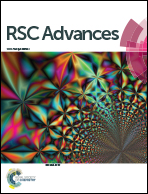One “Click” to controlled bifunctional supported catalysts for the Cu/TEMPO-catalyzed aerobic oxidation of alcohols†
Abstract
A simple and reliable methodology is described for the preparation of heterogeneous bifunctional catalysts with a high control over surface composition. The strategy relies on the grafting of a mix of catalytic components from an azide-functionalized silica platform using the CuAAC reaction. The resulting finely engineered supported catalysts are employed in the model Cu/TEMPO-catalyzed aerobic oxidation of benzylic alcohol.


 Please wait while we load your content...
Please wait while we load your content...